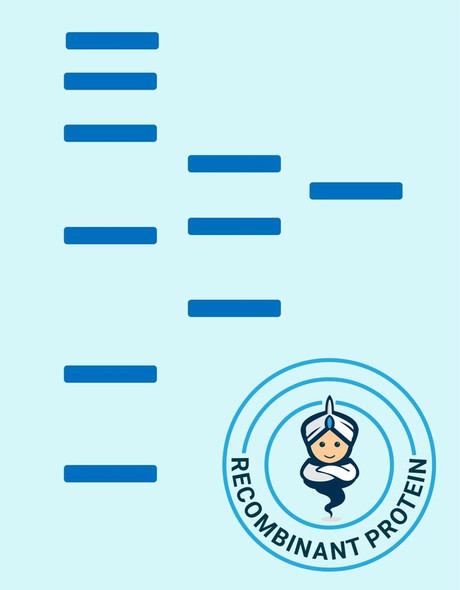Description
| Antibody Name: | E6 Antibody (PACO34958) |
| Antibody SKU: | PACO34958 |
| Size: | 50ug |
| Host Species: | Rabbit |
| Tested Applications: | ELISA |
| Recommended Dilutions: | |
| Species Reactivity: | Human papillomavirus type 16 |
| Immunogen: | Recombinant Human papillomavirus type 16 Protein E6 protein (1-158AA) |
| Form: | Liquid |
| Storage Buffer: | Preservative: 0.03% Proclin 300 Constituents: 50% Glycerol, 0.01M PBS, PH 7.4 |
| Purification Method: | >95%, Protein G purified |
| Clonality: | Polyclonal |
| Isotype: | IgG |
| Conjugate: | Non-conjugated |
| Background: | Plays a major role in the induction and maintenance of cellular transformation. Acts mainly as an oncoprotein by stimulating the destruction of many host cell key regulatory proteins. E6 associates with host E6-AP ubiquitin-protein ligase, and inactivates tumor suppressors TP53 and TP73 by targeting them to the 26S proteasome for degradation. In turn, DNA damage and chromosomal instabilities increase and lead to cell proliferation and cancer development. The complex E6/E6P targets several other substrates to degradation via the proteasome including host NFX1-91, a repressor of human telomerase reverse transcriptase (hTERT). The resulting increased expression of hTERT prevents the shortening of telomere length leading to cell immortalization. Other cellular targets including Bak, Fas-associated death domain-containing protein (FADD) and procaspase 8, are degraded by E6/E6AP causing inhibition of apoptosis. E6 also inhibits immune response by interacting with host IRF3 and TYK2. These interactions prevent IRF3 transcriptional activities and inhibit TYK2-mediated JAK-STAT activation by interferon α resulting in inhibition of the interferon signaling pathway. |
| Synonyms: | Protein E6, E6 |
| UniProt Protein Function: | Plays a major role in the induction and maintenance of cellular transformation. Acts mainly as an oncoprotein by stimulating the destruction of many host cell key regulatory proteins. E6 associates with host E6-AP ubiquitin-protein ligase, and inactivates tumor suppressors TP53 and TP73 by targeting them to the 26S proteasome for degradation. In turn, DNA damage and chromosomal instabilities increase and lead to cell proliferation and cancer development. The complex E6/E6P targets several other substrates to degradation via the proteasome including host NFX1-91, a repressor of human telomerase reverse transcriptase (hTERT). The resulting increased expression of hTERT prevents the shortening of telomere length leading to cell immortalization. Other cellular targets including Bak, Fas-associated death domain-containing protein (FADD) and procaspase 8, are degraded by E6/E6AP causing inhibition of apoptosis. E6 also inhibits immune response by interacting with host IRF3 and TYK2. These interactions prevent IRF3 transcriptional activities and inhibit TYK2-mediated JAK-STAT activation by interferon alpha resulting in inhibition of the interferon signaling pathway. |
| UniProt Protein Details: | |
| NCBI Summary: | |
| UniProt Code: | P03126 |
| NCBI GenInfo Identifier: | 9627104 |
| NCBI Gene ID: | 1489078 |
| NCBI Accession: | NP_041325.1 |
| UniProt Secondary Accession: | P03126,Q71BI7 |
| UniProt Related Accession: | P03126,Q547J2 |
| Molecular Weight: | 21.2 kDa |
| NCBI Full Name: | transforming protein |
| NCBI Synonym Full Names: | |
| NCBI Official Symbol: | E6 |
| NCBI Official Synonym Symbols: | |
| NCBI Protein Information: | transforming protein |
| UniProt Protein Name: | Protein E6 |
| UniProt Synonym Protein Names: | |
| Protein Family: | G-protein coupled receptor |
| UniProt Gene Name: | E6 |
| UniProt Entry Name: | VE6_HPV16 |






